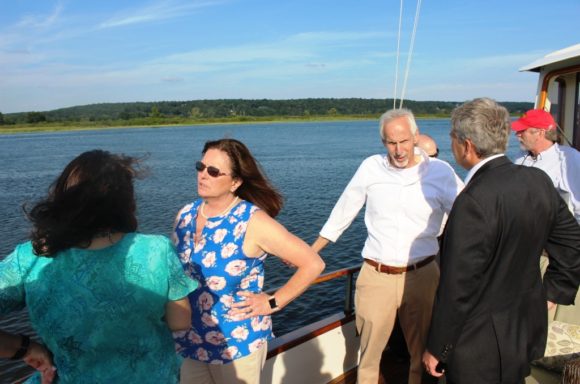
There was an overarching message both throughout the Connecticut Port Authority’s (CPA) meeting in Old Lyme’s Town Hall Thursday afternoon and during a subsequent boat ride on the MV ‘Victoria’ for members and local officials on the Connecticut River. It was, in the words of CPA Chairman Scott Bates, that, “We’re absolutely committed to river communities.”
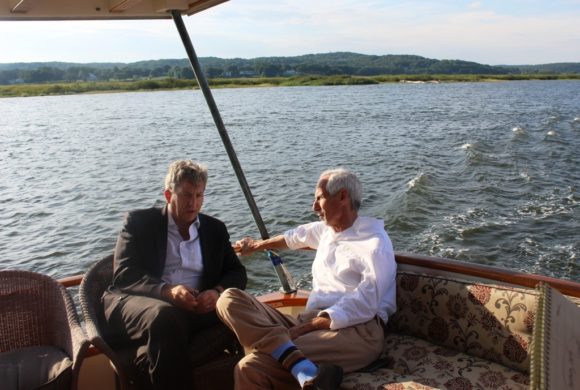
In addition, while sailing from Essex down to Old Saybrook and then back up to Hamburg Cove on a perfect afternoon, Bates stressed, “Part of our mission is protecting these beautiful waters … and the quality of life we have here while preserving access to the river.”
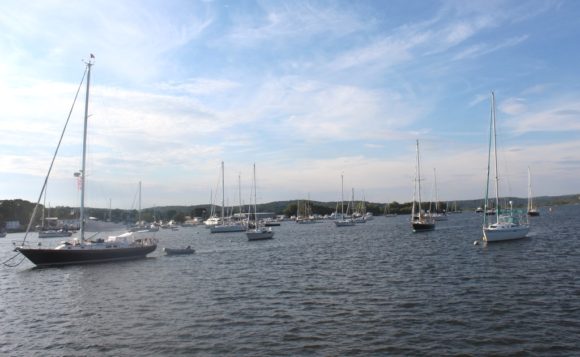
Bates noted that to have “five local officials (Chester First Selectwoman Lauren Gister, Deep River First Selectman Angus McDonald Jr., Essex First Selectman Norm Needleman and Old Lyme First Selectwoman Bonnie Reemsnyder, all of whom were on board, and Old Saybrook First Selectman Carl Fortuna, who was unable to join the trip) “involved” was a really positive sign in terms of “building a coalition.” This, Bates explained, was key to the development of a strategic plan for the CPA—something the Authority has been charged with preparing with a deadline of Jan. 1, 2017.

The CPA is a relatively new quasi-public agency created in 2014 with board appointments made in 2016. Bates said the agency was responsible for 35 coastal communities and with this trip, he would now personally have visited 28 of them. Since the CPA has not created a strategic plan previously, Bates said he is determined, “to include everyone,” in the process, adding that he regards part of the Authority’s mission to be “getting small town and big cities together.” and, in turn, “to make great things happen for our state.”
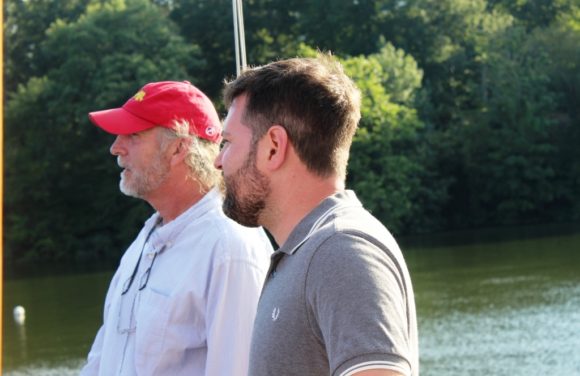
Apart from Bates and the four local First Selectmen and Selectwomen, also on board were Lower Connecticut River Valley Council of Governments (RiverCOG) Executive Director Sam Gold, River COG Deputy Director and Principal Planner J.H. Torrance Downes, CPA Board of Directors member John Johnson and Joe Salvatore from the CPA. Reemsnyder is also a board member of the CPA.

At the earlier meeting in Old Lyme, Downes had given a presentation to CPA members to introduce them to the Lower Connecticut River during which he had described the geography of the estuary, noting it had, “very little industry and very little commercial development.” He described it as a “really prime area for bird migration” and highlighted numerous points of scenic beauty.
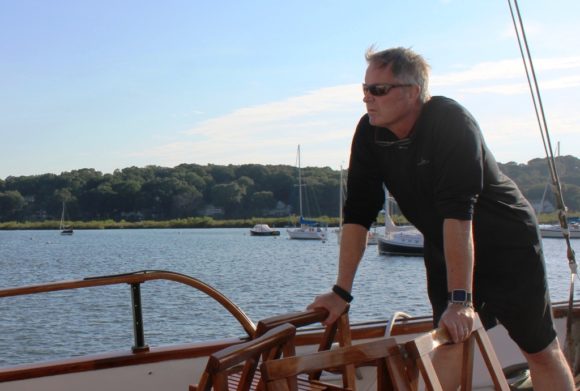
Bates noted one of the CPA’s responsibilities is to pursue state and federal funds for dredging and, while sailing under the Baldwin Bridge towards the Connecticut River’s mouth where several tributaries join the main river, Reemsnyder commented that Old Lyme had been a beneficiary of a $1.6 million state grant for dredging two of those tributaries — the Black Hall and Four Mile Rivers. She noted that it had been a successful exercise thanks in part to Salvatore, who had, “held our hand through the whole project.”

Johnson, whose life and business career according to the CPA website, have “a common underlying element: the coastal waters,” also confirmed the benefits of a dredging program, saying, “There is a need for depth of water — both elements, marine and maritime, need depth of water.” Still on the dredging issue, Bates said he had met separately with Old Saybrook First Selectman Fortuna and told him that he could have “whatever he needs to keep the mouth of the Connecticut River open.”
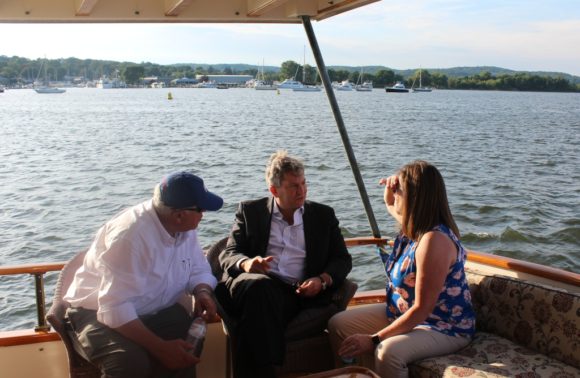
Reemsnyder took a minute to commend Bates for his leadership of the CPA, saying, “Scott has given focus to coastal communities,” while Johnson added, “We are blessed with our new chairman.”
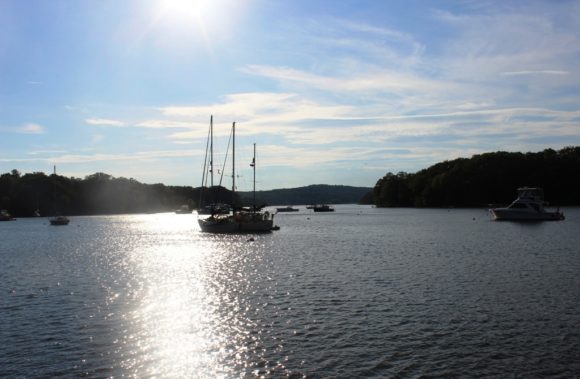
Glancing around at the numerous boats docked both in marinas and on the river itself, Reemsnyder remarked, “Add up the money in these boats … [they represent] lots of economic drivers.” On the same theme, Bates noted that the state is marketing its ports for the first time using “national expertise” in some cases with the aim of moving “more people and goods in and out of Connecticut.” He added, “We have some great assets [in terms of ports in the state] but we could do more.”
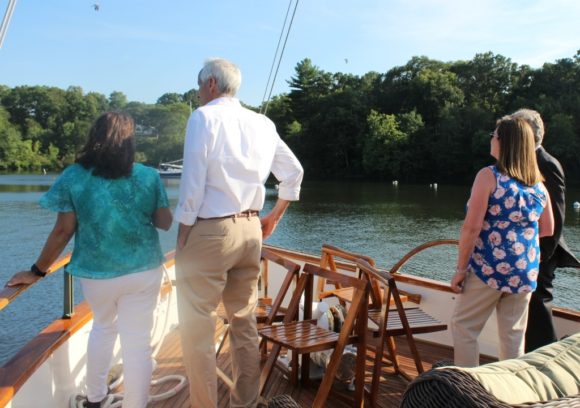
As the “Victoria’ pulled gently back into dock at Essex Yacht Club, Bates summarized the benefits of the boat trip saying that by spending time with these local leaders, he had been able to “see their waterfronts, assess their needs,“ and gain an “appreciation of the vitality of the Lower Connecticut River basin,” emphasizing one more time, “This is really about pulling together as a state … we’re all on one team.”
The Connecticut Port Authority may be a worthwhile effort, but how can we judge? What is its purpose? Is has to be more than just “improving Connecticut’s infrastructure.” Is its purpose to facilitate the development of recreational opportunities on the Connecticut River, or to bring container ships to New Haven or Bridgeport? Or both?
Let’s have an explanation of its game plan. To say “we are gathering information” isn’t sufficient. What was the vision of the Governor and state legislators who sponsored this expenditure by a state financially stressed.
Nothing in this article suggests its purpose other than “appreciation of the vitality of the Lower Connecticut Valley” or “we are all one team.” What does this really mean?
Thanks, Ted. All very important questions. As for “we are all one team” — while I do believe in nurturing the commonalities of the small towns in the region (we are much stronger together), I have concerns when these issues are presented, predigested. In particular, while I do not have a strong personal stance on dredging, many do on both sides of the issue. As with the issue of high speed rail, this “we are all one team” approach can work to stifle debate, and actually leave small towns at the mercy of broader state-level interests.